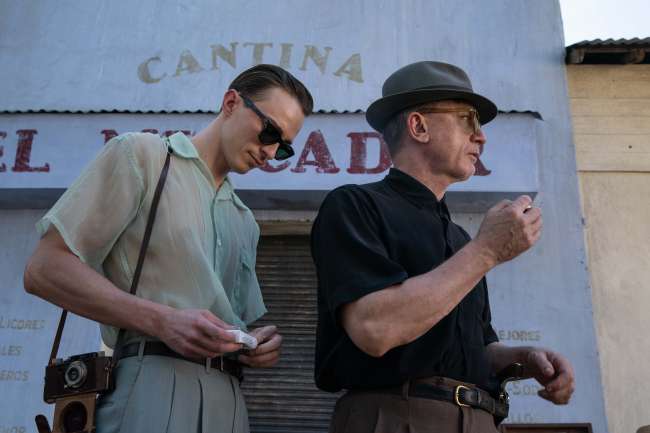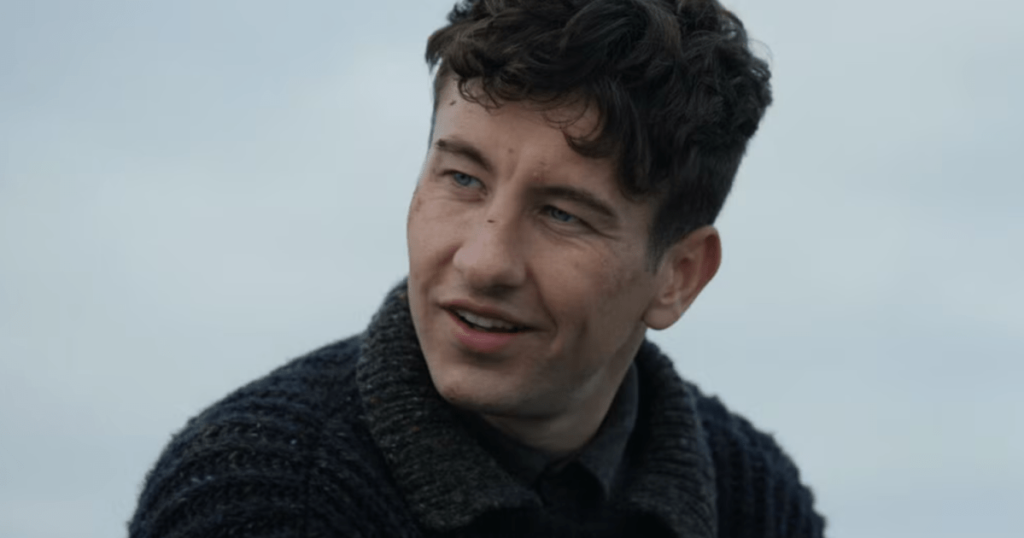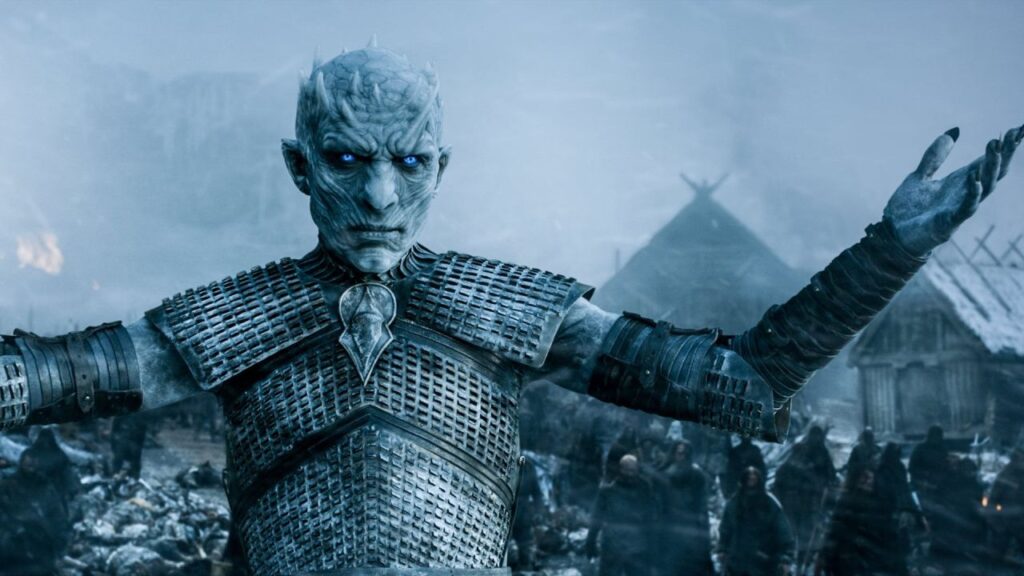Jonathan Anderson had an outsized effect on pop culture with his very first costume design credit — think about how many “I Told Ya” shirts you witnessed on social media and at Halloween parties this year. Of course, Anderson’s influence in the fashion world has been felt for years as creative director of Loewe, but success in the fashion world doesn’t always translate into success in movies. But if Anderson wrestled with self-doubt, the director responsible for hiring him never questioned his abilities.
“I would do anything for Luca [Guadagnino],” Anderson told IndieWire. “I’m one of those people who cannot say no to Luca. Luca has this amazing way of just being like, ‘Yeah, no, you can do it. Don’t worry, you can do it. Just make it happen.’ And you’re like, ‘No, I have no idea!’”
Luca Guadagnino was right about Anderson, of course: The costumes Anderson created for Guadagnino’s two 2024 releases, “Challengers” and “Queer,” are as period-detailed and character-specific as anything on film. And both films offered their own singular challenges.
For “Challengers,” the sweat- and sex-drenched tennis dramedy starring Zendaya, Mike Faist, and Josh O’Connor (which scored Anderson a CDGA Award nomination), Anderson knew exactly the corner of men’s fashion he wanted to explore for the very recent past. ”‘Challengers’ is this crazy moment,” Anderson said of the early 2000s flashbacks. “I remember being in high school, when living in Ireland, and ordering — on the internet that had just started — clothing at Abercrombie and Fitch and having it shipped to Ireland, paying extortionate amounts of tax on it to get it into the country, just because I wanted to be that guy.”
Anderson had to navigate the worlds of workout attire, athleisurewear, and quiet wealth to bring the three characters to vivid life. And somehow, it was O’Connor’s character, Patrick, with whom he immediately connected.
“ I read it, and I knew Josh was going to be doing the character, and I was just like: JFK Jr.,” Anderson said. “That’s where the ‘I Told Ya’ t-shirt came from, of a famous image of JFK Jr. in Central Park, playing frisbee with a dog.”
But the true challenge of “Challengers” was finding a way for clothes with which audiences are familiar to tell a story about a character. “I’m a novice, but every single person who works in contemporary costume says it’s so difficult,” Anderson said. “You’re trying to make people look at a very [recent] time period [in a new way]. There was a moment where me and Luca were debating over shoes for Tashi as she’s gonna watch this tennis match. And I was trying to think of, like, overt wealth. And there’s nothing to say that you’ve made it than a Chanel espadrille. There’s a vulgarity to it, but at the same time, you’ve made it. So I love the kind of [clothing] psychology in this film. To imitate life, you have to understand what is the psychology of what you are putting out there.”
Anderson was thus prepared to tackle Guadagnino’s “Queer,” an adaptation of the William S. Burroughs novella about gay ex-pats in 1950s Mexico. On paper, at least.
”I was very nervous,” Anderson said. “I’ve just done ‘Challengers,’ and I bluffed my way through and got it done and made it happen. And then Luca’s, ‘OK, we’re doing a period film.’ Six months later! I put a lot of pressure on myself ’cause it was like, ‘How do we take someone who’s known in a greater landscape as this person, and then we’re gonna take him back into a completely different world?”
Transforming stars Daniel Craig and Drew Starkey into the problematic couple at the heart of Guadagnino’s movie turned into a master class in mid-century men’s fashion, an era Anderson finds vastly underrated. “ I wanted everything to be from the period,” Anderson said. “I was like, ‘Everything has to fit into a suitcase. We’re having one piece of clothing, we are gonna do everything as it deteriorates. And it was just amazing to just discover these pieces of clothing from the period that are so contemporary, and then you put them on someone, and then you’re like, ‘Wow, you’re bang in the time period!”
Starkey’s build — what Anderson calls a “period body” — aided in matters as well, something Anderson immediately recognized at their first meeting. Anderson already had in mind the paintings of British artist Gyln Philpot as inspiration for Starkey’s character, Eugene Allerton, and meeting Starkey only solidified that reference.
“When I met Drew, I was reminded of this very famous painting [Philpot] had done of a guy in a yellow shirt,” Anderson said. “I [had been] panicking because I was trying to work out what Allerton was going to be. With Daniel, I had already manifested [the look], but with Allerton, I had no idea. Then I saw Drew, and the minute we started experimenting in the fitting, I was like, ‘Wow.’”
But while Allerton is always buttoned-up and streamlined and Craig’s Lee is slightly rumpled and sweaty (Anderson wanted to give the impression that his “cocaine white” shirts are gradually seeping into his skin over the course of the film), Anderson had perhaps the most fun costuming Drew Droege’s jaded queen John Dumé.
Already a fan of Droege’s videos as Chloe Sevigny, Anderson was thrilled when Guadagnino told him Droege was joining the cast. “ I was like, ‘My God, this is like a gag!’” Anderson said, laughing. “So then [Dumé] became another obsession for me. One of my favorite photographers from history is [mid-century queer photographer] George Platt Lynes, and I’ve always loved this image of Marc Chagall that he shot. He’s holding these metal flowers, and he’s leaning in with these like crazy eyes.”
Anderson combined that image with the shot silk jackets popular in the early ’50s that came in “ridiculous colors.” “When I was researching and found this group of jackets, I was like, ‘OK, this person is gonna be Marc Chagall meets this, meets all this.’ And then you have this amazing actor, who just has to move his face, and you’re in gags.” And though some of Droege’s scenes were cut, Guadagnino insisted that every time he was seen at the bar, Dumé had another book — which eventually extended to another nod to the Chagall photo.
“We got props to make these aluminum flowers that Marc Chagall holds,” Anderson said. “And I love that about Luca, that he was like, ‘Let’s take iconography from history and let’s just recreate it. Let’s just make this, and no one will have any idea.”
Now the “Queer” iconography is available, as well, thanks to a capsule collection with his fashion brand JW ANDERSON. Available at JW Anderson Soho in London, JW Anderson in Milan, and jwanderson.com, the sweatshirts, T-shirts, caps, and tote bags all feature a range of references to the film, from the poster’s instantly iconic font to stills of Craig and Starkey and the quote, “I want to talk to you… without speaking.”
Anderson can’t help but be part of the zeitgeist. As Guadagnino might have said to his two-time costume designer: “I told ya.”


